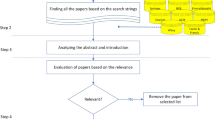Abstract
Active friending is a problem in social networks that is to assist a user to build a relationship to a target user by sending invitations to a set of intermediate users; the goal is to maximize the acceptance probability at the target node taking advantage of the social influence through the network formed by the intermediate nodes. In this paper, we convert the original formulated active friending problem of nonsubmodular maximization subject to cardinality constraint into a submodular cost submodular knapsack problem in the IC model, and we show that the two problems are equivalent. We similarly make the conversion on the active friending in the LT model. Then we give a general combinatorial optimization algorithm to solve active friending problems in both the IC model and the LT model with a guaranteed approximation. We analyze the computational complexity of the problem and the algorithm performance. The effectiveness of the generalized method is verified on real data sets.




Similar content being viewed by others
References
Bharathi S, Kempe D, Salek M (2007) Competitive influence maximization in social networks. In: International workshop on web and internet economics. Springer, pp 306–311
Chen W, Wang Y, Yang S (2009) Efficient influence maximization in social networks. In: Proceedings of the 15th ACM SIGKDD international conference on knowledge discovery and data mining. ACM, pp 199–208
Chen H, Xu W, Zhai X, Bi Y, Wang A, Du D-Z (2014) How could a boy influence a girl?. In: 2014 10th International conference on mobile ad-hoc and sensor networks. IEEE, pp 279–287
Chen W, Yuan Y, Zhang L (2010) Scalable influence maximization in social networks under the linear threshold model. In: 2010 IEEE international conference on data mining. IEEE, pp 8–97
Conforti M, Cornuéjols G (1984) Submodular set functions, matroids and the greedy algorithm: tight worst-case bounds and some generalizations of the rado-edmonds theorem. Discrete Appl Math 7(3):251–274
Domingos P, Richardson M (2001) Mining the network value of customers. In: Proceedings of the seventh ACM SIGKDD international conference on Knowledge discovery and data mining. ACM, pp 57–66
Goyal A, Lu W, Lakshmanan LV (2011) Celf++: optimizing the greedy algorithm for influence maximization in social networks. In: Proceedings of the 20th international conference companion on world wide web. ACM, pp 47–48
Goyal A, Lu W, Lakshmanan LV (2011) Simpath: an efficient algorithm for influence maximization under the linear threshold model. In 2011 IEEE 11th international conference on data mining. IEEE, pp 211–220
Iyer RK, Bilmes JA (2013) Submodular optimization with submodular cover and submodular knapsack constraints. In: Advances in neural information processing systems, pp 2436–2444
Iyer RK, Jegelka S, Bilmes JA (2013) Curvature and optimal algorithms for learning and minimizing submodular functions. In: Advances in neural information processing systems, pp 2742–2750
Jegelka S, Bilmes J (2011) Submodularity beyond submodular energies: coupling edges in graph cuts. In: CVPR 2011. IEEE, pp 1897–1904
Kempe D, Kleinberg J, Tardos É (2003) Maximizing the spread of influence through a social network. In: Proceedings of the ninth ACM SIGKDD international conference on Knowledge discovery and data mining. ACM, pp 137–146
Kwon J, Kim S (2010) Friend recommendation method using physical and social context. Int J Comput Sci Netw Secur 10(11):116–120
Lu Z, Zhang Z, Wu W (2017) Solution of bharathi-kempe-salek conjecture for influence maximization on arborescence. J Comb Optim 33(2):803–808
Richardson M, Domingos P (2002) Mining knowledge-sharing sites for viral marketing. In: Proceedings of the eighth ACM SIGKDD international conference on knowledge discovery and data mining. ACM, pp 61–70
Silva NB, Tsang R, Cavalcanti GD, Tsang J (2010) A graph-based friend recommendation system using genetic algorithm. In: IEEE congress on evolutionary computation. IEEE, pp 1–7
Sviridenko M (2004) A note on maximizing a submodular set function subject to a knapsack constraint. Oper Res Lett 32(1):41–43
Tang Y, Xiao X, Shi Y (2014) Influence maximization: near-optimal time complexity meets practical efficiency. In: Proceedings of the 2014 ACM SIGMOD international conference on management of data. ACM, pp 75–86
Vondrák J (2010) Submodularity and curvature: the optimal algorithm (combinatorial optimization and discrete algorithms)
Wang Z, Liao J, Cao Q, Qi H, Wang Z (2015) Friendbook: a semantic-based friend recommendation system for social networks. IEEE Trans Mob Comput 14(3):538–551
Wang A, Wu W, Cui L (2016) On bharathi-kempe-salek conjecture for influence maximization on arborescence. J Comb Optim 31(4):1678–1684
Wu W, Du D-Z, et al. (2018) An approximation algorithm for active friending in online social networks. arXiv preprint arXiv:1811.00643
Xie X (2010) Potential friend recommendation in online social network. In: Proceedings of the 2010 IEEE/ACM int’l conference on green computing and communications & int’l conference on cyber, physical and social computing. IEEE Computer Society, pp 831–835
Yang D-N, Hung H-J, Lee W-C, Chen W (2013) Maximizing acceptance probability for active friending in online social networks. In: Proceedings of the 19th ACM SIGKDD international conference on Knowledge discovery and data mining. ACM, pp 713–721
Yuan J, Wu W, Li Y, Du D (2017) Active friending in online social networks. In: Proceedings of the Fourth IEEE/ACM international conference on big data computing, applications and technologies. ACM, pp 139–148
Author information
Authors and Affiliations
Corresponding author
Additional information
Publisher's Note
Springer Nature remains neutral with regard to jurisdictional claims in published maps and institutional affiliations.
Rights and permissions
About this article
Cite this article
Gu, S., Gao, C., Yang, R. et al. A general method of active friending in different diffusion models in social networks. Soc. Netw. Anal. Min. 10, 41 (2020). https://doi.org/10.1007/s13278-020-00653-8
Received:
Revised:
Accepted:
Published:
DOI: https://doi.org/10.1007/s13278-020-00653-8




